Key Points
- A Chapter 13 Bankruptcy is often called a reorganization bankruptcy, because it requires you to repay some debts before receiving a discharge.
- The court oversees the debt repayment plan and will be involved in your finances throughout the process.
- The debt repayment plan will last up to five years. Upon successfully completing the repayment plan set forth by the court, you will receive a discharge of the remaining qualified debts after the repayment period ends.
- Like a Chapter 7 bankruptcy, not all debts qualify for a discharge.
- A Chapter 13 bankruptcy will be reporting on your credit file for 7 years, negatively impacting your credit score and making it difficult if not impossible to obtain credit during this time.
- You will be required to disclose that you have filed for bankruptcy in the past when applying for certain types of credit, like a mortgage, or when applying for a job or military service.

When the bills pile up, and you are short of income each month, you may consider filing for the discharge of your debt under the US bankruptcy code. In theory, it’s a do-over. A judge dismisses all current debts, and you can begin again with a clean slate.
The reality of bankruptcy can be a far different picture.
There are primarily two kinds of personal bankruptcies, Chapter 7 and Chapter 13. A Chapter 7 bankruptcy applies to consumers who do not earn enough to repay debts and can qualify for a liquidation of their debt under bankruptcy.
Chapter 13 is a reorganization that requires you to repay a portion of your debts based on a court directed repayment plan.
How a Chapter 13 Works
When you own assets that you want to keep and earn you enough income to repay some or all your debts, the law requires you to file a Chapter 13 bankruptcy. You will establish a court-approved repayment plan and repay debts under court supervision. At the conclusion of the repayment period, a judge will discharge any remaining qualified debt balances.
The debt repayment plan places debts in three categories: priority, secured, and unsecured. Priority debts include mandatory fees like court costs, attorney fees, and back taxes. Secured debt includes debts secured by assets like your home or vehicle. Typically, you will repay priority and secured debts in full. A judge will decide how much of your unsecured debts you can repay based on your discretionary income.
The repayment plan can last up to five years and requires you to redirect all disposable income towards debt reduction.
The most attractive feature of Chapter 13 is that you can keep your home and vehicles provided you can maintain the payments. Upon filing, creditors must cease collection efforts, and all foreclosure and repossession proceedings will stop.
Qualifying for a Chapter 13 Bankruptcy
To qualify for Chapter 13 bankruptcy, unsecured debts must be below $394,725 and secured debts no higher than $1,184,200.
At the time of filing, you must include a list of creditors and the debts owed to each, your income, assets, and a breakdown of monthly expenses. The court also verifies income and reviews the most recent tax returns before establishing the debt repayment.
You must also successfully complete a court approved credit counseling course within 180 days of filing.
Once the debt repayment agreement is in place, you will make monthly payments to the court appointed bankruptcy trustee, who distributes the payments to your creditors. You can accelerate payments; however, if you fall behind, you must go before a judge for a review.
How Much Does It Cost to File Chapter 13 Bankruptcy?
The average cost of filing Chapter 13 bankruptcy is $310, which pays court costs. Credit counseling can cost up to $100, and attorney fees average between $3,000 and $4,000, depending on the complexity of your case.
What is the Difference between a Chapter 13 and Chapter 7 Bankruptcy?
Chapter 7 bankruptcy will discharge debts without repayment if you qualify. Chapter 13 is the best option for consumers who wish to retain assets and have enough income to repay most or all existing debts through a court-supervised repayment plan.
What are the Long-Term Impacts of Filing for Chapter 13 Bankruptcy?
A Chapter 13 bankruptcy remains on your credit for seven years. However, you must attest to filing bankruptcy on credit applications, job applications or applications for military service for the rest of your life if asked.
Options Outside of Bankruptcy
Repaying debts under court supervision requires you to report changes to your financial circumstances. The judge or court appointed trustee must also approve any new debt obtained during the repayment plan period.
You may be able to eliminate high levels of unsecured debt without filing bankruptcy. Credit counseling and debt consolidation require you to repay the full balance owed but could lower interest rates and reduce fees on existing debt obligations.
Debt settlement can lead to negotiated payoffs for less than the full balance owed without requiring court supervision, giving you more control over your finances and the debt repayment process.
If you are struggling to make your minimum payments on high interest credit card debt, be sure to review all your options before deciding. Bankruptcy can make it difficult or impossible to obtain new credit for 10 years, and credit counseling is difficult to qualify for if you have recently experienced a hardship such as the loss of a job, spouse or experienced a medical disability. Settling your debts with the help of an experienced law firm may be a better option and have you out of debt and on your way to an improved financial position much sooner.
